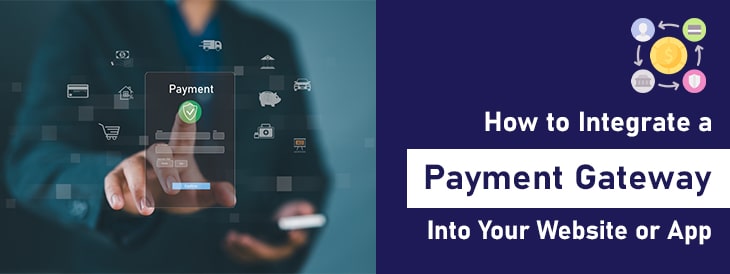How to Integrate a Payment Gateway Into Your Website or App
How to Integrate a Payment Gateway Into Your Website or App

Integrating a payment gateway into your website or app is a crucial step for any business looking to facilitate online transactions seamlessly. Whether you’re running an e-commerce store, a subscription service, or a mobile application, payment gateway integration allows you to securely process payments, manage customer transactions, and enhance user experience.
This process can seem daunting, especially if you’re dealing with high-risk gateway integration due to the nature of your business. However, with the right approach and tools, you can streamline this integration, ensuring that your customers’ data is protected while providing them with various payment options. In this blog post, we will guide you through the steps involved in effectively integrating a payment gateway, helping you navigate the technical aspects and make informed decisions for your business.
Understanding the Importance of Payment Gateways
Payment gateways are essential for any online business that wishes to accept payments from customers around the world. They act as the bridge between your website or app and the financial institutions that process transactions, ensuring that payment data is securely transferred.
By integrating a payment gateway, you enable your business to handle various payment methods, including credit cards, debit cards, and digital wallets, which can enhance your customer experience and potentially increase sales. Additionally, a reliable payment gateway helps in managing recurring billing, fraud detection, and compliance with financial regulations.
For businesses dealing with high-risk transactions, choosing a specialized high-risk gateway can provide extra layers of security and fraud prevention. Understanding the critical role of Payment gateways will help you make informed decisions about which gateway best suits your business needs, ultimately contributing to the smooth operation and growth of your online transactions.
Some Related Blogs
- How to Get Approved for a High-Risk Merchant Account
- The Future of Payment Processing for High-Risk Businesses
- How to Deal With Chargebacks and Fraud in High-Risk Payment Processing
- The Latest Trends in Payment Processing Technology For High-Risk Businesses
Choosing the Right Payment Gateway for Your Needs
Choosing the right payment gateway for your needs involves several critical considerations to ensure it aligns with your business model and customer preferences. Start by assessing the types of payment methods you want to offer, such as credit cards, debit cards, and digital wallets. Some gateways specialize in specific payment methods, so it’s important to choose one that matches your needs. Additionally, consider the geographic locations of your customers; some payment gateways are better suited for international transactions and offer multi-currency support.
Another key factor is the fee structure. Payment gateways charge various fees, including setup fees, transaction fees, and monthly fees. Analyze these costs to find a gateway that fits within your budget while offering the features you need. Also, look into the gateway’s reputation for reliability and customer service, as these are crucial for maintaining a seamless payment experience for your customers.
For businesses handling high-risk transactions, it’s essential to select a high-risk payment gateway that offers robust fraud detection and security measures. These specialized gateways can provide the additional layers of protection needed to safeguard sensitive customer information and reduce the risk of fraudulent activities. By carefully evaluating these factors, you can choose a payment gateway that best suits your business requirements.
Setting Up a Merchant Account
Setting up a merchant account is a crucial step in enabling your business to process online payments. A merchant account is a type of bank account that allows your business to accept and process credit card payments. To set up a merchant account, you will first need to choose a bank or financial institution that offers merchant services. It’s essential to compare different providers to find one that offers favorable terms and conditions, including competitive transaction fees and strong customer support.
Once you have chosen a provider, you’ll need to complete an application process, which typically requires providing detailed information about your business, including your business structure, tax identification number, and estimated monthly sales volume. Some providers may also require a credit check and financial statements.
After your application is approved, the bank will provide you with the necessary credentials and tools to integrate the merchant account with your payment gateway. This integration is essential for securely transmitting transaction data between your website or app and the financial institutions involved. Make sure to thoroughly test the integration to ensure that payments are processed smoothly and securely. Properly setting up your merchant account can significantly impact the efficiency and security of your payment processing system.
Integrating the Payment Gateway with Your Platform
Integrating the payment gateway with your platform involves several key steps to ensure a seamless and secure transaction process. Begin by selecting a Payment gateways that provides API documentation and support for the programming languages used in your website or app. This documentation is crucial as it guides your developers through the integration process.
Next, create a sandbox account, which allows you to test the payment gateway integration in a controlled environment without processing actual payments. This step helps in identifying and resolving any issues before going live.
Incorporate the payment gateway’s API into your website or app by following the provided guidelines. This typically involves embedding payment forms, setting up server-side scripts to handle transactions, and configuring webhooks to receive real-time payment notifications.
Ensure that your platform adheres to security best practices, such as encrypting sensitive data and complying with PCI DSS standards. Regularly update your integration to accommodate any changes in the payment gateway’s API or security protocols.
Finally, conduct end-to-end testing to verify that transactions are processed correctly and that the user experience is smooth. Pay particular attention to handling errors and edge cases to ensure robustness in all scenarios.
Testing and Troubleshooting Your Integration
Once you have integrated the Payment gateways into your platform, thorough testing is crucial to ensure all components work correctly. Start by running unit tests on individual components of the integration, such as payment form validation and server-side transaction handling. Use the sandbox account provided by the Payment gateways to simulate various transaction scenarios, including successful payments, declined transactions, and error conditions.
Pay close attention to edge cases, such as network timeouts and incorrect payment details, to ensure your system can handle them gracefully. Monitor the logs for any anomalies or errors that occur during the testing phase. These logs can provide valuable insights into issues that need to be addressed. Additionally, test the user interface to ensure it provides clear and accurate feedback to users during the payment process.
Don’t forget to verify the security aspects of your integration, such as ensuring that sensitive data is encrypted and that your system complies with PCI DSS standards. If any issues are identified, work closely with your development team to troubleshoot and resolve them promptly. By meticulously testing and troubleshooting, you can ensure a smooth and secure payment experience for your users.
![]()
Email us anytime!
Email customer service 24/7 at info@binarygateways.com
![]()
Call us anytime!
Reach customer care 24/7 at (801) 761-5001
